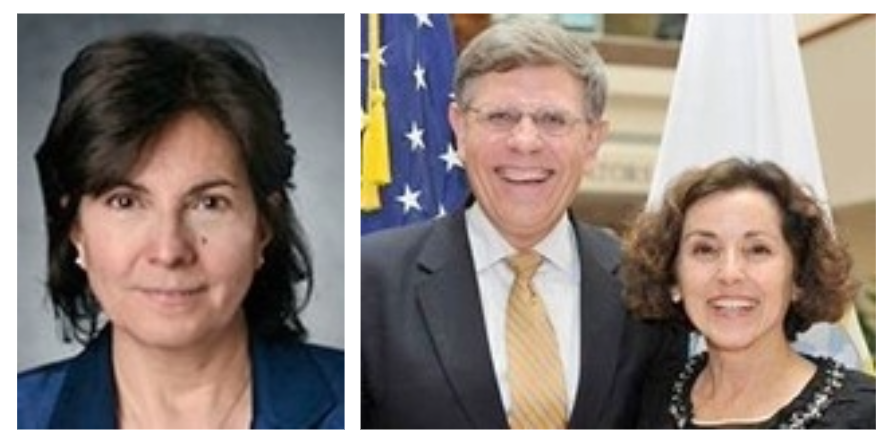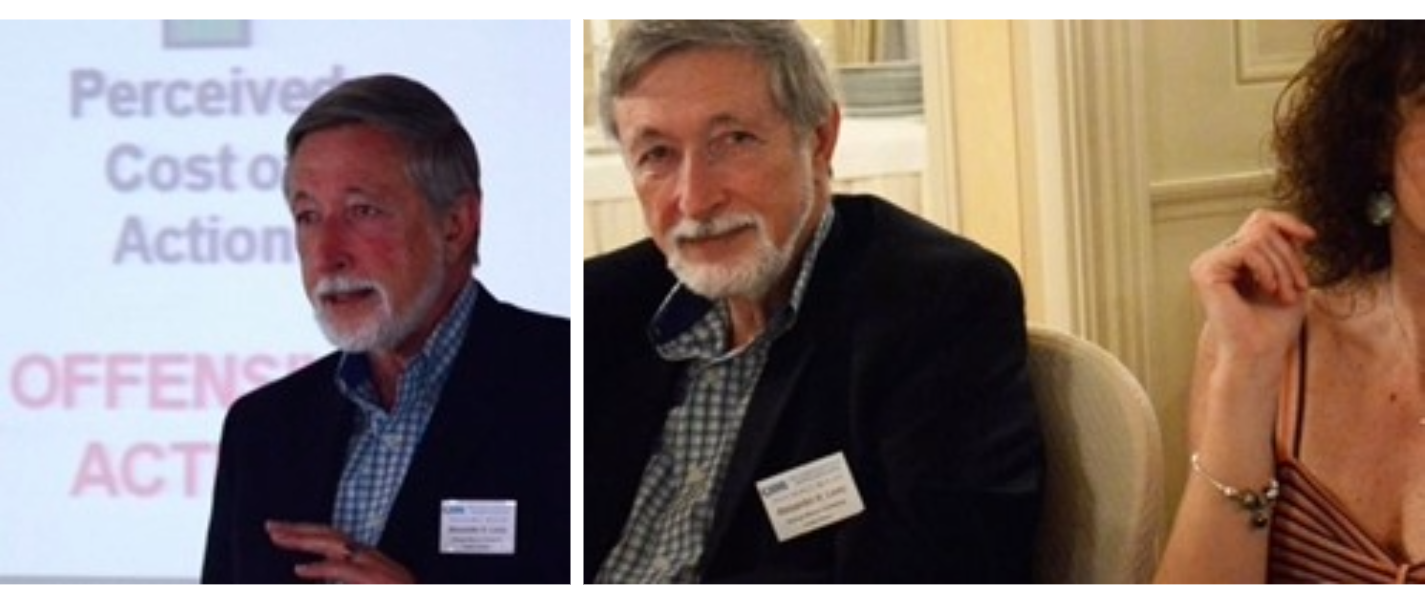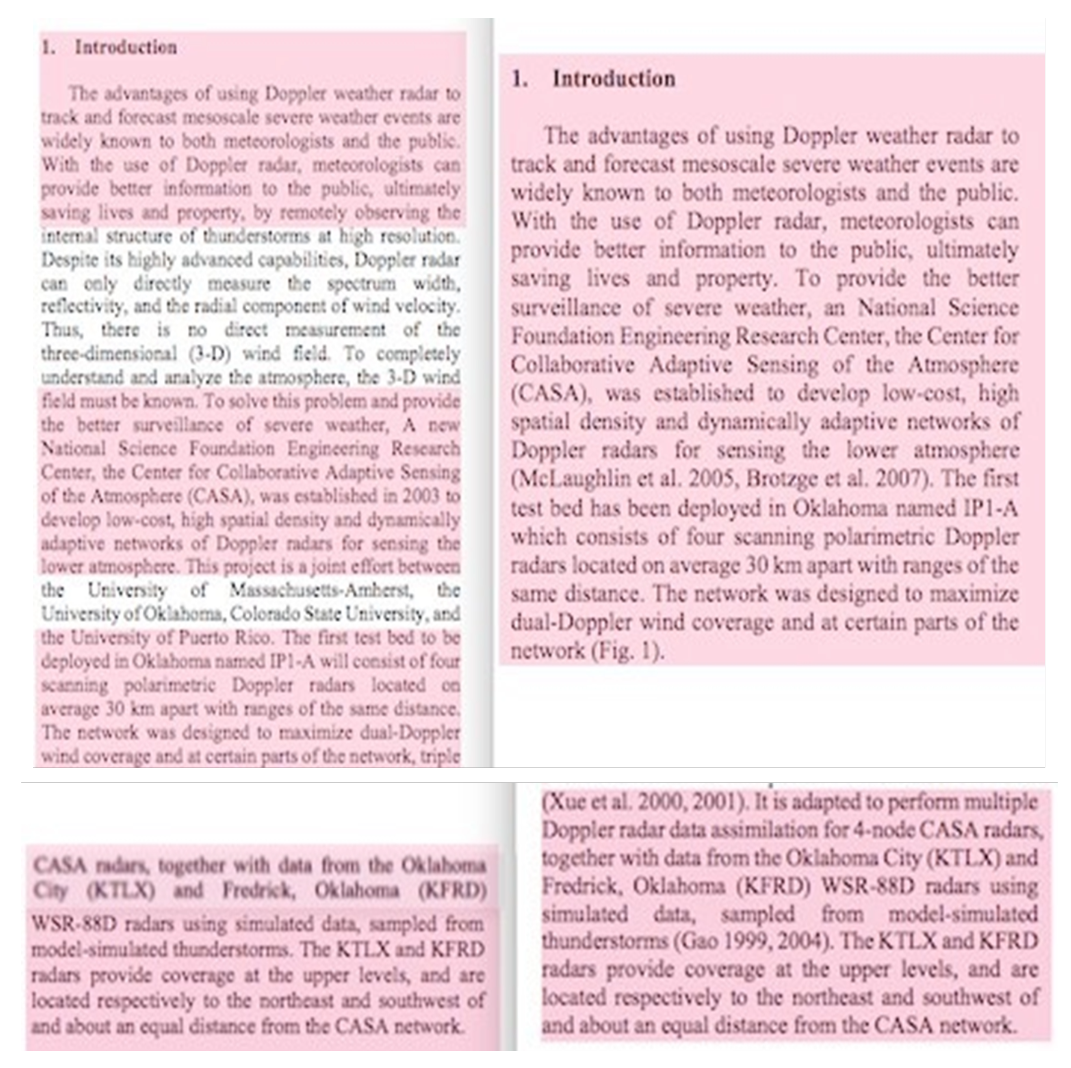
Colleges and K-12 schools penalize students for written work that copies from a source without quotation marks and citations. But many colleges provide wiggle room for faculty. Harvard allowed its former president, Claudine Gay, to correct the record by adding quotation marks and citations long after papers were published.
Imagine a school being unwilling to admit losing a football game. It resorts instead to saying its team scored fewer points than the opponent and has been cleared of allegations of losing the game. It is then given the opportunity to correct the record by kicking a field goal on Sunday after failing to do so during the official game on Saturday.
Plagiarism is a factual term when applied to students, much like describing other characteristics—sophomore, on-campus, economics major. Nobody says Jane Doe is allegedly a sophomore, allegedly majoring in economics, and allegedly neglected to enclose copied passages in quotation marks and failed to cite the source. These are not allegations—they are instead simple observations.
However, the tables are turned when the author is a faculty researcher. The lower bar for faculty results from language introduced in 1999 by the White House Office of Science and Technology Policy (OSTP):
A finding of research misconduct requires that:
There be a significant departure from accepted practices of the scientific community for maintaining the integrity of the research record;
The misconduct be committed intentionally, or knowingly, or in reckless disregard of accepted practices; and
The allegation be proven by a preponderance of evidence.
Thus, copying without attribution is not “research misconduct” if a professor’s scientific community accepts the practice, if it wasn’t intentional or knowing or reckless, or if it is not proved by a preponderance of evidence. Harvard adopted OSTP’s language in 2019, creating a lot of wiggle room for professors and administrators.
The OSTP’s generous language was also incorporated into the Code of Federal Regulations (CFR) for the Department of Energy (DOE) (2 CFR §910.132), the National Institutes of Health (NIH) (42 CFR §93.104), and the National Science Foundation (NSF) (45 CFR §689.2).
So sure, your professors copied verbatim without quotation marks or citation, but is it a “significant departure from accepted practices of the scientific community?” That’s a judgment call! And what was their mental state at the time? Were they aware at that moment when they omitted quotation marks and copied from the source and failed to cite, and did they intend to do so? Prove it!
The burden of proof is shifted to the accuser, and the question of misconduct is decided by an interpreter of policy rather than a finder of fact. When an academic official uses “duplicative language without appropriate attribution,” the deciding official must weigh OSTP’s added elements—accepted practice, committed intentionally, knowingly, or in reckless disregard—before concluding that “research misconduct” occurred.
Several novel theories have been advanced to defend the work of Gay and avoid using the p-word. For example, perhaps the original authors do not mind that their work was copied. Or maybe the copied passages are not sufficiently substantial. Perhaps the former Harvard president added a novel idea, so not all of Gay’s publication is a duplicate. Moreover, the copied passages in the former president’s dissertation were approved by her advisor.
These ad hoc defenses are not available to students, and none are listed as exceptions within Harvard’s definition of plagiarism. Yet all of them have been offered to excuse its president’s [REDACTED]ism.
Under Interim Policy and Procedures for Responding to Allegations of Research Misconduct, section IV, Harvard defines a complainant to be “a person” acting in good faith. But the president’s duplicative language might have been discovered by software—maybe even by artificial intelligence—not a person. The burden is on the complainants to prove their own personhood. Plus, the accusers might be motivated by politics. The accusers failed to prove that they complained in good faith.
Publication strategies seen in the Harvard president’s work are also practiced by research officials outside Harvard. NSF officer Kevin Tomsovic’s 2022 paper “Distributed energy management for networked microgrids in a three-phase unbalanced distribution network” was retracted “because of a substantial overlap with a different article by the same authors.”
Tomsovic had previously written a letter to The New Yorker offering his perspective on duplication, objecting to Western “materialistic” efforts to preserve originals rather than making duplicates. He was responding to an article by Alexander Stille entitled “Faking It,” which was published in The New Yorker on June 15, 1998, that described a Chinese factory that churned out reproductions of ancient artifacts so they could be passed off as originals in museums.
“We call them fakes, but the Chinese have a different sense of the value of original and copy.” Copying an existing work of art was seen as a sign of reverence rather than as a lack of originality.
The article explains that “Westerners” prefer to preserve old artifacts by using visible glue that separates the preservationist’s restoration “so that the viewer could distinguish the workmanship of the original craftsman from that of the conservator.” But from the perspective of Tomsovic’s letter, creating a duplicate is better than setting off the original work within the visible glue of materialistic quotation marks.

Former NSF officer Kevin Tomsovic with ponytail and pearl-topped Chinese-emperor cap; cosplay emperor’s cap—with a ponytail; Tomsovic’s letter to The New Yorker.
PubPeer is a site where whistleblowers can report concerns about peer-reviewed publications; a PubPeer discussion disclosed that half the text in Tomsovic’s 2011 paper, “Increasing the Resolution of Wide-Area Situational Awareness of the Power Grid through Event Unmixing,” was copied from Lidan Miao’s copyright-2007 PhD dissertation. Tomsovic was an NSF officer at the time of Miao’s dissertation research. Tomsovic’s paper did not include Miao as a co-author, did not enclose copied passages in quotation marks, did not cite the dissertation, and did not indicate permission of the copyright holder. Tomsovic’s paper was funded by NSF grant CNS-0831466—awarded in 2008, after Miao had already graduated—and was “admirably less materialistic” than papers that use quotation marks and citations.
Current NSF officer Janis Terpenny had a pair of retractions: her papers, “Digital Design and Manufacturing on the Cloud: A Review of Software and Services,” and “Cloud-Based Design, Engineering Analysis, and Manufacturing: A Cost-Benefit Analysis” both copied from previously published work.

NSF officer Janis Terpenny; former OSTP director and interim NSF director Kelvin Droegemeier, with former NSF director France Cordova.
NSF has a conflict of interests preventing it from acting in cases like these—its own director France Cordova had her paper, “X-ray observations of PSR B0355+54 and its pulsar wind nebula” retracted. The retraction notice states that “the authors had already published the article in another journal (McGowan et al. 2006). Therefore this article is redundant.” NSF cannot find fault with republishing research that was previously published and copyrighted, because NSF accepted such behavior by its director. Cordova was NASA’s chief scientist, so her behavior is manifestly the accepted practice of the scientific communities within both NSF and NASA.
Similarly, U.S. Air Force chief scientist Alexander Levis copied verbatim from a paper co-authored by his student Holly Handley. He also copied from the theses of his students Ahmed Abu Jbara and Muhammad Faraz Rafi, presenting their work as his original work at a conference at a Black Sea resort.
Levis copied without quotation marks from a paper co-authored by Jean-Louis M. Grevet, presenting the work at a conference in Italy. Levis attended the conference’s social dinner, with a tour of a wine-making company, courtesy of taxpayer-funded Air Force grant FA9550-05-1-0388.

Former U.S. Air Force chief scientist Alexander Levis at the 28th European Conference on Modelling and Simulation, Brescia, Italy.
Levis hastily retired from his position as professor at George Mason University (GMU) in June 2020, the same month the Office of Naval Research (ONR) opened an investigation of one of his publications. Both ONR and GMU promptly ended their inquiry into possible misconduct when he retired.
Cordova’s successor at NSF, Kelvin Droegemeier, had his paper “The adjoint Newton algorithm for large-scale unconstrained optimization in meteorology applications” corrected by the publisher, similar to the generous treatment of papers written by Harvard’s president.
Droegemeier’s paper “Real-time national GPS networks: opportunities for atmospheric sensing” received a similar correction, stating that “Portions … come from the content published in the paper by Ware et al.” With a simple post-publication “correction” by the publisher, plagiarism is instantly cured.
Droegemeier’s paper “Assimilation of CASA and WSR-88D radar data via 3DVAR to improve short term convective weather forecasting” copied the words of a pair of students verbatim, which would have resulted in penalties if the students had done such a thing.

Paper by students Nutall and Gilreath with Kelvin Droegemeier, et al. (left); later paper by Droegemeier, et al. (right) that copied from, but omitted, former students Nutall and Gilreath.
Droegemeier’s paper “Multiple Doppler Wind Analysis and Assimilation via 3DVAR using Simulated Observations of the Planned CASA Network and WSR-88D Radars” copied from an earlier paper “Multiple Doppler Wind Analysis and Assimilation via 3DVAR using Simulated Observations of the Planned CASA Network and WSR-88D Radars” by the same two former undergraduate students, and is listed on Droegemeier’s publication website at the University of Illinois. Republishing the words of students is, therefore, an accepted practice of the university, which means it cannot be “research misconduct” there.
Droegemeier served as director of OSTP, the same office that promulgated the lower standards of conduct for researchers who receive federal funds. He is a fellow of the American Meteorological Society and of the American Association for the Advancement of Science; he serves on the Board of Directors of Oak Ridge Associated Universities; he was vice chair of the National Science Board. Therefore, no one in these scientific communities can find his practices to be “research misconduct,” as per OSTP’s definition of the term. These communities all accepted his practices.
Droegemeier is Special Advisor to the Chancellor for Science and Policy at the University of Illinois at Urbana-Champaign and is available for Harvard’s presidency.
One might attempt to engage the National Science Board (NSB) to provide oversight of NSF personnel’s duplicative language without appropriate attribution. But no luck—NSB vice chair Victor McCrary did the same thing his high-ranking peers have done. His paper “Growth of InGaAs/InP quantum well structures by low-pressure metalorganic chemical vapor deposition” duplicated his earlier paper “Growth of InGaAsP/InP single-quantum-well and multiple-quantum well structures by low-pressure metal-organic chemical vapor deposition.” This practice cannot be “research misconduct” because it is the accepted practice of the National Science Board.
Droegemeier’s OSTP deputy for artificial intelligence, Lynne Parker, repeatedly copied the words of her former co-authors. Her paper “Behavior-Based Cooperative Robotics Applied to Multi-Target Observation” copied approximately 99 percent of the earlier IEEE-copyrighted paper “Cooperative multi-robot observation of multiple moving targets,” written with Brad Emmons. But the later version left Emmons out, and instead was published under the sole authorship of Parker without acknowledging the previous version that Emmons co-authored.
Parker’s essay “Robot Teams: From Diversity to Polymorphism” copied extensively from five copyrighted sources, including the paper “Learning and Adaptation in multi-robot Teams” co-authored by David Jung.
Parker’s paper “Cooperative robot teams applied to the site preparation task” copied approximately 60 percent of the paper “Opportunistic adaptation in space-based robot colonies: Application to site preparation,” originally co-authored by Terry Huntsberger and Paolo Pirjanian—they were replaced by a new co-author, Yi Guo. This pair of papers is discussed on PubPeer.
Parker is an IEEE fellow and a distinguished member of the Association of Computing Machinery (ACM), so her conduct is an accepted practice of these scientific communities and cannot, therefore, be “research misconduct.”
The ACM bestowed its highest honor—the million-dollar Turing award—on Jack Dongarra. His 2016 paper “Linear algebra software for large-scale accelerated multicore computing” was discussed on PubPeer. Approximately 80 percent of the paper was copied from previous copyrighted publications, without quotation marks.
Dongarra’s Sage-copyrighted paper “Batched matrix computations on hardware accelerators based on GPUs” copied some 95% of the ACM-copyrighted paper “Optimization for performance and energy for batched matrix computations on GPUs.” The papers were published two days apart and were under concurrent review. The Sage version did not enclose copied passages in quotation marks, did not cite the earlier ACM version, and did not indicate permission of the copyright holder. But that behavior is plainly accepted practice by the computing community (as demonstrated by its Turing award to Dongarra), and therefore cannot be considered “research misconduct” within that community, as per OSTP’s generous language.
Another PubPeer discussion showed that approximately half of Dongarra’s IEEE paper “MAGMA embedded: Towards a dense linear algebra library for energy efficient extreme computing” was copied from the Springer-copyrighted paper “A Framework for Batched and GPU-Resident Factorization Algorithms Applied to Block Householder Transformations.” The IEEE version did not enclose copied passages in quotation marks, cite the Springer version, or indicate permission of the copyright holder. The IEEE version did not include Tingxing Dong, who was co-author of the original Springer version. Is that plagiarism? Is it copyright infringement? Is it misconduct? Not if it’s the accepted practice of ACM and its Turing Awardee. Moreover, these are accepted practices across the broader science and engineering communities, inasmuch as Dongarra is an IEEE fellow and is a member of the U.S. National Academy of Sciences and the National Academy of Engineering.
These publication practices are plainly accepted by the Executive Branch and by Congress, both of which endorsed the appointments of Droegemeier and Parker to the nation’s highest science offices. Otherwise, the public would have to contemplate that these governmental branches were negligent in evaluating the candidates’ publication histories because a staffer could simply search for authors’ names on PubPeer.
The OSTP’s language has immunized the scientific community from findings of misconduct resulting from plagiarism—or whatever word that means copying without quotation marks or citation or permission of a copyright holder. All the cool kids do it these days, and it’s no longer a departure from accepted practices of the scientific community; to the contrary, the cool kids at NSF and OSTP and so forth have made it the norm.
The above list of academic officials is humbly offered to the Harvard Corporation as it considers possible replacements for Harvard’s recent president. The public understands that Harvard’s former president is drawn from a pool of candidates who engage in the practice of duplicating copyrighted work without quotation marks or citations. Harvard doesn’t yet have a word for this practice—it certainly cannot be plagiarism. And there certainly cannot be anything unethical about it. But if you are a student, don’t dare do this yourself.
Photo by Summit Art Creations — Adobe Stock — Asset ID#: 249547833
By faculty, by students, and probably the janitorial staff too. Truly good, original work is rare enough to begin with, but it seems to be at an all time deficit. Mediocrity has become king in just about every field.
There’s more:
“Psychology faces a replication crisis. The Reproducibility Project: Psychology sought to replicate the effects of 100 psychology studies. Though 97% of the original studies produced statistically significant results, only 36% of the replication studies did so (Open Science Collaboration, 2015). This inability to replicate previously published results, however, is not limited to psychology (Ioannidis, 2005). Replication projects in medicine (Prinz et al., 2011) and behavioral economics (Camerer et al., 2016) resulted in replication rates of 25 and 61%, respectively, and analyses in genetics (Munafò, 2009) and neuroscience (Button et al., 2013) question the validity of studies in those fields. Science, in general, is reckoning with challenges in one of its basic tenets: replication.”
See: https://www.ncbi.nlm.nih.gov/pmc/articles/PMC5445189/
On the other hand, we have things like the Sokal Hoax — that was 28 years ago and memory is that others have done the same thing since. See: https://en.wikipedia.org/wiki/Sokal_affair
Don’t get me going about “Global Cooling”, aka “Global Warming”, aka “Climate Change.”
Let’s talk about the Great Portland Gale of 1898 and the Hurricanes of 1938 & 1954 before we talk worse storms today…
Plagiarism is bad, but fabrication is worse. Anyone remember cold fusion???
Has plagiarism been “normalized”? I doubt it. I’ve been plagiarized once that I know of — I got the offending paper to review, and I recognized my own writing in one (unacknowledged) paragraph, and the let the editor know. Perhaps against the inclinations of the editor, I asked that the paper be let through after proper citation was given.
I have found that graduate students can come from cultures with very different attitudes about plagiarism. This has once or twice led to potentially disastrous material prepared by students that, fortunately, I’ve had the good sense (or luck) to intercept.
It is true that with parts of papers being written by possibly many different participants, there is a danger of plagiarized material making it past the senior investigator. I don’t know what to do about that except to teach scientific ethics — what is plagiarism? don’t do it! — and in the future, perhaps have AI bots check for plagiarism.
My own view is that in my scientific career, plagiarism has been a minor factor.
This in no way is meant to exculpate Claudine Gay. On the other hand, I think there is much more to object to there than her plagiarism.